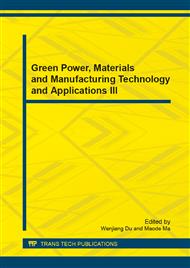p.484
p.488
p.493
p.497
p.501
p.507
p.511
p.515
p.519
Analysis on Influencing Factors of Degradation of Water Treatment with Ultrasonic Wave Based on GPC
Abstract:
To promote the application of the ultrasonic technology in pollution control, the introduction and the analysis of development of this technology, the basic theory of ultrasonic degradation and the influencing factors of ultrasonic degradation were studied in this paper. The analysis of molecular weight and distribution of wastewater and the elaboration of the influences of the ultrasonic frequency, power and the duration on the degradation were conducted by GPC. And an objective and reasonable explanation was advanced: in a certain range, proper increase of the ultrasonic frequency, power or duration would enhance its degradation; but excessive increase of the frequency, power or the increase of temperature due to long duration would decrease the degradation.
Info:
Periodical:
Pages:
501-506
Citation:
Online since:
January 2014
Authors:
Price:
Сopyright:
© 2014 Trans Tech Publications Ltd. All Rights Reserved
Share:
Citation:


